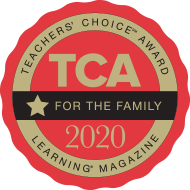Materials
- One Bean by Anne Rockwell
- a few images of a fully grown kidney bean plant with bean pods, from the Internet or a book
Key Science Concepts
- Plants grow from seeds. Some plants also grow from bulbs.
- Plants need water and light to grow.
- Plants have different parts: roots, stems, leaves, and fruits.
Vocabulary
Emphasize plant words like seed, roots, sprout, stalk, leaves, flowers, and bean pod as well as science process words like experiment, test, compare, describe, observe, and prediction.
Directions
Before you read: Ask children to think about what has been happening with their seeds. How did their seeds look when they first planted them? What has happened to them over the week? How have they changed? Show children the cover, and read the title and author’s name. Ask, Why do you think the children on the cover look so happy? What are they doing?
After you read: Ask children to compare how the boy planted and cared for his bean with what they have been doing with their beans. Show children the diagram on the back of the book and discuss the three stages of the bean seed’s growth:
- bean seed
- sprout, with stalk, leaves, and roots
- a fully grown bean pod that can be eaten
To review these stages of the plant’s growth, turn through the book and have children describe the sequence of the plant’s growth as you point to the illustrations. As an option, children can role play the sequence of growth as you reread from the book.
Ask children to point out the parts of the plant: seed, roots, sprout, stalk, leaves, flowers, and bean pod. Ask children to think about their own growing plants. Tell children that, during learning center time, they can try to identify these same parts on their own plants.
Show children the images of fully grown kidney bean plants, pointing out the pods containing the beans. To manage their expectations, explain that they will see many exciting things happen to their bean seeds, but that the bean pods will not appear for about a month. Show this passage of time on a calendar and provide concrete connections (such as holidays or birthdays) to help children better understand the meaning of a month.

 Español
Español








